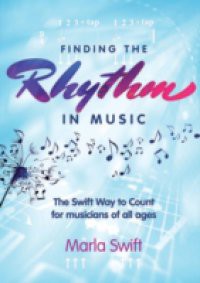In 1930, George Gershwin composed the score to his extravagant Broadway musical Girl Crazy. The show's hit song was immediately identified as the catchy "I Got Rhythm", which the singer Ethel Merman delivered with extraordinary impact. The claim inherent in the song's title is certainly one that Gershwin and Ms Merman could justifiably have made many times over. Realistically though, not everyone is born with a natural gift for rhythm - one wonders what Gershwin might have done with a song entitled "I Ain't Got Rhythm" - and this can prove a major frustration for those wishing to learn an instrument or to sing. So, for the person who struggles with rhythm, is it possible to acquire an improved facility for counting, as well as a strong rhythmic intelligence? In Marla Swift's "Finding the Rhythm in Music: The Swift Way to Count", this question receives a most resounding "yes". Marla's systematic and logical approach to rhythm represents the fruits of her distinguished and highly successful life as a performer and teacher of music. The method she describes with such clarity and insight is not merely a theoretical construct: it is a tried and tested approach from which countless students have benefited over many decades. Marla demonstrates a keen awareness of the challenges involved in counting, as well as interesting insights into their root causes. As she herself observes, "...the brain doesn't contain a beat: it thinks in concepts". The book's five chapters allow the student to gain insight and confidence in a structured and sequential way, combining as they do, clear explanations with the opportunity to put theory into immediate practice.

